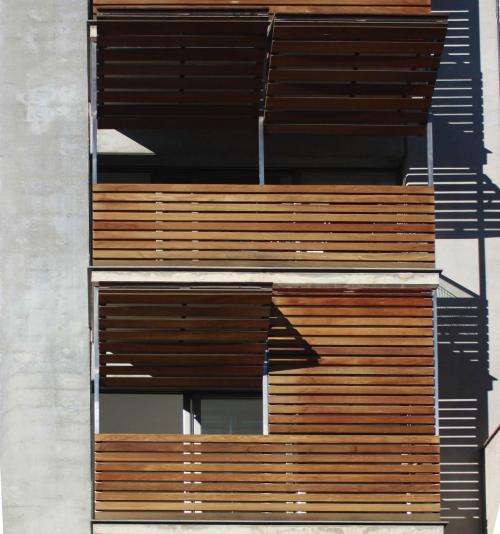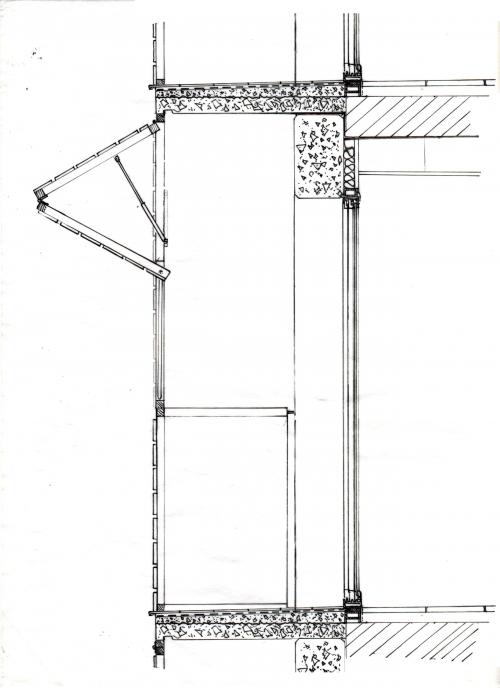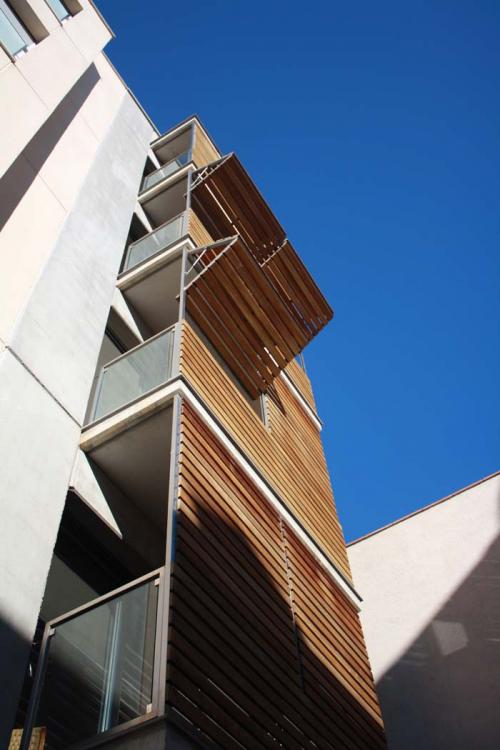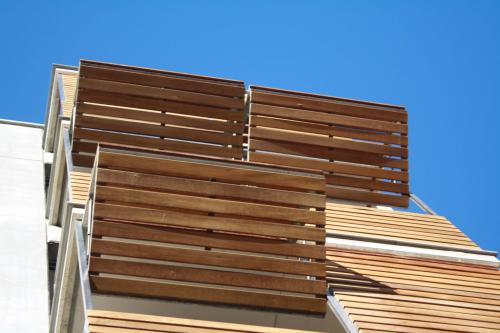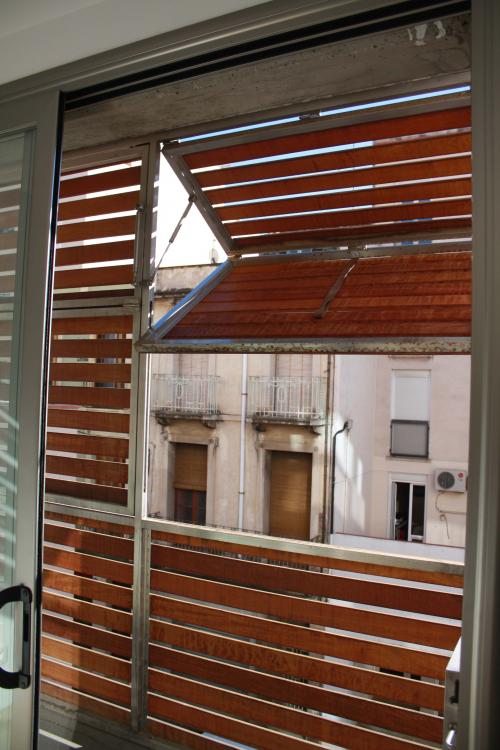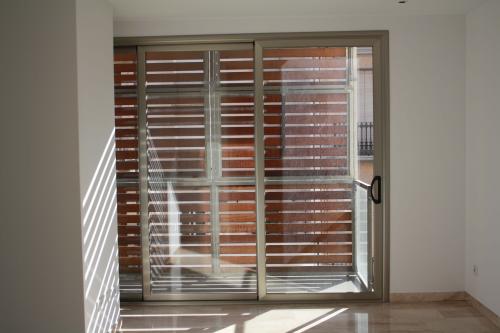Wooden louvered shutter protecting balcony [213]
The facade of this building is made up of slatted wooden panels, which articulate with each other in such a way making the gallery part of the balcony. The sill panel is fixed, while allowing the movement with its two openings. These slats and their articulation allow an excellent control of views; regulate the flow of light as well as controlling solar radiation. The distance between the two wooden slats, the lack of closure on the sides and the existence of another opening at the other end of the house allows for pleasant ventilation. The slats also protect against rain, and the stone balcony with its sloping floor as well as sliding French Windows that open to the entire space, ensures that it is impermeable.
In this photo you can see how the various slatted panels go together, the panels make up the enclosure, giving the facade flexibility and a dynamic appearance, alternating gaps and transparency with opacity that looks apparent from the street below when they are closed. In the background under the precast concrete lintel we can see a hint of the aluminium French window.
We can observe how the slatted panels are structured, designed within a framework of aluminium, they move on a central guide (which is located in the middle, on the railing of the balcony) hinged between the two panels and the top crossbar. The panels are held in the open position via a piston. We can also see the projection section and the heavy concrete panels on one side, and on the other the gallery makes up the threshold of the balcony. The character of the prefabricated panels ensures it is impermeable to water.The balcony we see in this section is also composed of three sheets of aluminium and is double glazed for thermal control. The guide containing the balcony is perforated in three places to ensure drainage of water.Finally, between the outside edge of concrete (the panel) and the interior (plasterboard), there is a layer of thermal insulation.
Robert Zaera
Robert Zaera


